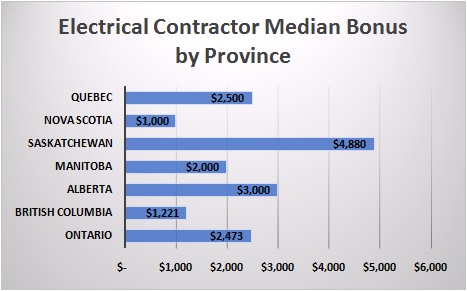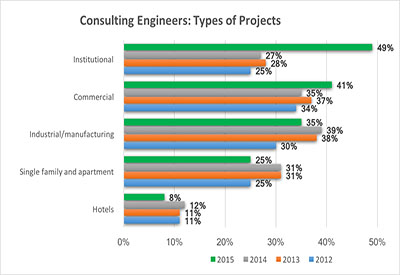Whitepaper: Electrification and Energy Efficiency

Aug 15, 2021
INTRODUCTION
Enhanced energy efficiency and carbon free electricity can reduce regional emissions by only about 40 percent by 2050—half the amount required to achieve the 80% goal. To meet 80% reductions, we need to incorporate a third strategy, strategic electrification. Strategic electrification is powering end users with electricity instead of fossil fuels in a way that increases energy efficiency and reduces pollution, while lowering costs to customers and society, as part of an integrated approach to deep decarbonization[1].
Strategic electrification aims to decarbonize Earth’s atmosphere, decrease pollution and reduce the costs of modern comfort and technology. Also known as “beneficial electrification,” this movement requires increased energy efficiency and end users powered by electricity from cleaner grids and renewable sources. The movement will transform both the built environment and society’s modes of transportation. Despite the enormity and complexity of its challenges, strategic electrification can’t be dismissed as niche or a possibility of the far future. The movement’s happening now, driven by a mix of public and private entities on the local, provincial and national level proceeding along voluntary and mandatory paths.
This paper gives an overview of strategic electrification and describes how Air Source Heat Pump (ASHP) systems help builders, engineers, MURB owners, cities and provinces, solve its challenges. Worldwide, all-electric heat pumps are the most popular technology for decarbonizing heating and cooling2. Heat pumps and heat-recovery systems contribute to lower carbon footprints and benefit strategic electrification by reducing overall costs for commercial building owners, consumers and society[3].
WHY DECARBONIZE?
For 800,000 years, before the Industrial Revolution and the widespread adoption of fossil-fuel burning technologies, the highest global average atmospheric amount of CO2 was 300 parts per million (ppm).3 As of 2018, the average amount was 407 ppm[4].
Fossil fuels are hydrocarbons consisting primarily of carbon and hydrogen. During combustion, the fuels’ carbon combines with oxygen. This makes CO2 an inevitable by-product when a system burns fossil fuels to release energy used for work or heat. Unfortunately, the amount emitted by fossil-fuel burning technologies is on pace to increase atmospheric CO2 to volumes that will change our environment.
The Pan-Canadian Framework on Clean Growth and Climate Change is our plan – developed with the provinces and territories and in consultation with Indigenous peoples to meet our emissions reduction targets, grow the economy, and build resilience to a changing climate. The plan includes a Pan-Canadian approach to pricing carbon pollution, and measures to achieve reductions across all sectors of the economy. It aims to drive innovation and growth by increasing technology development and adoption to ensure Canadian businesses are competitive in the global low-carbon economy. It also includes actions to advance climate change adaptation and build resilience to climate impacts across the country[6].
Even though Canada has one of the cleanest electricity systems in the world, electricity generation is still the fourth largest source of GHG emissions. Provinces and territories have already taken action on moving from traditional coal-fired generation to clean electricity. Ontario and Manitoba have already phased out their use of coal, Alberta has plans in place to phase out coal-fired electricity by 2030, Nova Scotia has created a regulatory framework to transition from coal to clean electricity generation, and Saskatchewan has a coal-fired generating unit with carbon capture technology, which captures 90 percent of emissions. New capacity will come from non-emitting sources—including hydro, wind, and solar—as well as natural gas. Energy efficiency and conservation will make added contributions to clean electricity systems[5].
To reduce emissions, meaningful action will need to be taken across all regions and sectors of the economy. Many of the things that Canadians do every day— like driving cars and heating homes—produce GHG emissions. Many activities that drive economic growth in the country, like extracting natural resources, industrial and manufacturing activities, and transporting goods to customers, also produce emissions. The policies that help drive down emissions can also help the economy to keep growing by cutting costs for Canadians, creating new markets for low-emission goods and services, and helping businesses use cleaner and more efficient technologies that give them a leg up on international competitors.

ELECTRIFY EVERYTHING
Utilities, provinces, cities, government agencies and non-profits have published a steady stream of studies and reports on how strategic electrification is the best way to achieve aggressive carbon emission reduction goals. An example is the city of Mississauga’s 2019 Net Zero Master Plan: Mississauga’s Climate Future. The report contains an analysis of decarbonization pathways performed by Siemens Center for Urban development. The analysis found that fully electrifying vehicles and building systems, would allow Canada’s sixth largest city to achieve its set GHG reduction goals. Air-source heat pumps, powered by electricity, are the best-performing technology in terms of CO2 emissions reduction as well as air quality improvements. An adoption rate of 50% across residential and non-residential buildings, combined with 41% renewable fuels used in the electricity-generation mix provides over 2 million metric tons of GHG emissions savings as compared to the 2050 business as planned scenario. These emissions savings can be attributed to fuel switching from natural gas to electricity for space and water heating. The assumption of replacing 50% of natural gas-based heaters with air-source electric heat pumps is in line with other municipal low carbon scenarios necessary for achieving an 80% by 2050 emission reduction target. Installing air-source electric heat pumps in 50% of the residential and commercial buildings could reduce GHG emissions by almost 30% as compared to the 2050 business as planned scenario[6].

ALL-ELECTRIC HEATING AND COOLING
ASHP technology consolidates heating and cooling into one all-electric, multizone system for offices, hotels, schools, multifamily buildings, indoor agriculture facilities and practically any commercial or residential application. An ASHP system consists of an outdoor unit and up to 8 indoor units connected via refrigerant lines and a communications network. Each zone is conditioned by its own indoor unit and can have its own set point. Instead of burning fossil fuels, air source heat pumps provide heating to zones by introducing ambient heat to the outdoor unit extracts from the air. During cooling, air source heat pumps reverse this process as indoor units transfer heat from zones to the outdoor unit which then rejects the heat. Indoor units are available in ductless and ducted styles.
THE INVERTER ADVANTAGE
An INVERTER-driven compressor enables the outdoor unit to vary the system’s capacity to match the load detected by each zone’s indoor unit(s) or separate sensors. Indoor units continuously communicate with the outdoor unit and controllers. Continuous communication lets ASHP systems modulate capacity based on loads, outdoor temperature, and occupancy while providing self diagnostics. With precise management of capacity, ASHP systems reliably maintain each zone’s set point without the noisy and energy-intensive start/stop cycles of conventional systems.
COMFORT IN ANY CLIMATE
While energy efficiency is a key benefit of an ASHP systems, it’s not a common discussion point among building occupants. Occupancy comfort is the benefit that residents will value most. It is still common in Canada for specifiers to select a gas-powered furnace or electric resistance for their heating system due to air source heat pump derating at sub-freezing temperatures. Today, ASHP systems use flash-injection technology in the compressor to offer unprecedented levels of capacity and efficiency at low outdoor ambient temperatures. This creates opportunities to replace fossil-fuel-burning equipment in more regions than before. For example, Mitsubishi Electric’s MR SLIM® ASHP systems with Hyper Heating INVERTER® (H2i®) technology can provide up to 80% of heating capacity down to -25° C and continuous heating at temperatures as low as -30° C*.
*All versions of models MXZ-4C36NAHZ, MXZ-5C42NAHZ, MXZ-8C48NAHZ, PUZ-HA24NHA, PUZ-HA30/36NKA, PUZ-HA42NKA. Includes tolerance. Units can operate down to -30°C and beyond, depending on conditions.
SOLVING ELECTRIFICATION CHALLENGES WITH HEAT PUMP TECHNOLOGY
While seemingly complex, strategic electrification consists of three primary components: increase energy efficiency; power thermal end uses with renewable energy and decarbonize the electric grid. Air source heat pump systems help building owners, architects and engineers solve challenges for each component as well as emerging building codes, standards and legislation related to decarbonization.
INCREASE ENERGY EFFICIENCY
Energy efficiency is a prerequisite for decarbonization. In regions with carbon intensive power grids, using more efficient systems and appliances helps reduce energy consumption as a good first step toward lowering carbon footprints. Heat pump systems are up to 50 percent more* energy-efficient than conventional, fixed-capacity HVAC equipment. Most of these savings occur during partial load conditions as heat pump systems continually adjust capacity and energy consumption to precisely match each zone’s load. Also, while gas-fired HVAC systems can’t exceed a COP of 1, HEAT PUMP systems regularly achieve COPs of 3 and higher, meaning they can deliver much more heat than they consume in watts. Additionally, heat pump systems require less ductwork than forced-air systems, further reducing energy consumed by fans.
https://www.energy.gov/energysaver/heat-pump-systems
LOWER LOADS
A high-performance building will have efficient mechanical systems, as well as low heating and cooling loads achieved through continuous insulation and an airtight thermal envelope. The INVERTER-driven ability of a HEAT PUMP system to match capacity with loads enables it to heat and cool a low-load building with less risk of short cycling than fixed-capacity equipment.
POWER THERMAL END USES WITH RENEWABLE ENERGY
Decarbonization and strategic electrification will ultimately require buildings to power space heating and water heating with renewable energy. Renewable energy sources like wind and sunlight are non-dispatchable, meaning they can’t be turned on and off to meet power demands. Facilities still require heating and cooling at night, during cloudy days and when the wind isn’t blowing. Given the current limitations of onsite and utility-scale storage technologies, renewable sources don’t leave any room for electrical waste. By using the precise amount of electricity needed to maintain each zone’s set point, heat pump systems mitigate the challenge of variable energy generation with INVERTER-driven variable capacity. This creates opportunities for well-insulated, high-performance buildings to power heat pump systems with on-site renewable energy[7].
DECARBONIZE THE ELECTRIC GRID
Canada produces 78.4% of its electrical power by low-carbon generation. Canada’s power generation mix is 60.3% from hydropower plants, 16.2% from Nuclear and 1.8% from wind turbines. The remainder comes from Natural Gas, Coal and Diesel plants. Canadian fossil fuel plants emitted 79 Megatonnes in 2015 which accounted for 10.9% of Canada’s GHG emissions. The 2016 GE study finds that it is technically feasible for wind to make up 35% of Canadian electricity generation. This is achieved by expanding wind power generation to 65 Gigawatts across the country[8].
CASE STUDY: VILNIUS MANOR SENIOR LIVING RETROFIT

Having a facility heated by electric resistance heat and no air circulation in a senior’s residence was recognized as a long-standing issue for their residents. The management of Vilnius Manor applied for financial assistance and looked to find a solution for their high electricity bills and poor air quality.
Traditional systems were not an option, as they emit greenhouse gases and add to the carbon footprint. Moreover, the old building could not accommodate a standard boiler or roof top HVAC systems. While looking for a solution that provided a simple user-friendly system that would provide sufficient heating, cooling, dehumidification and air filtration. Vilnius Manor made the decision to install a Mitsubishi Electric split heat pump system in each of the residential suites.
The solution selected was (120) ductless split systems. The units were each 12,000 Btu cold climate models able to satisfy 100% of the heating requirements. The models selected provide exceptional heating capability down to -25°C* and beyond, while using ozone friendly R-410A refrigerant. Where previously there was no cooling, the residents now had a highly efficient SEER rating of up to 26. The high energy efficiency is facilitated by an inverter-driven compressor, which enables the outdoor unit to vary the system’s capacity to match the load detected by the indoor unit. This permits a consistent indoor temperature while using only the necessary power needed to provide heating and cooling. The individual systems allow each tenant to have independent temperature control. The retrofit provided air filtration and appropriate airflow to be circulated in each suite. Due to the fact the systems are combined heating and cooling, dehumidification is another benefit that was not previously available. Overall, the level of occupancy comfort was greatly improved by the heat pump retrofit of this building.
*Includes tolerance. Typical units can operate down to -27°C depending on conditions. All test conditions are based on AHRI 210/240
CONCLUSION
The decarbonization challenge is significant and complex, but the momentum has started to gain traction from both grass roots organizations and various levels of government. Legislation, building codes, financial incentives, product innovations and environmental advocacy encourage the transition from fossil fuel-burning equipment and will continue to evolve. The strategic electrification of our infrastructure will happen systematically, creating opportunities in the near and long term. HEAT PUMP systems are an example of how the smart, all electric technologies of the future can enable society to enjoy improved comfort while reducing both energy and carbon emissions.
REFERENCES
1. NEEP Strategic Electrification
2. Electrify Everything, Energy Transition Magazine published by The Rocky Mountain Institute (November 2019
3. Reducing Costs and Achieving Value with VRF Systems White Paper published by Mitsubishi Electric Trane HVAC US
4. Global Carbon Project (2019) Carbon Budget and Trends 2018. published on 4 December 2019
5. Pan-Canadian Framework on Clean Growth and Climate Change
6. Siemens- Mississauga’s climate Future
7. MEUS 2020 White Paper
8. The Cost of Decarbonizing the Canadian Electricity system

















